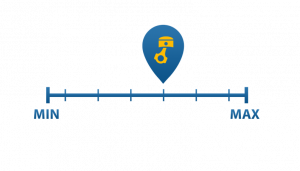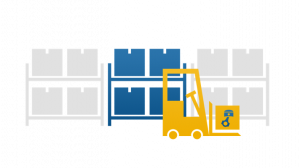Measuring the Right Metrics in Your Parts Department
Key Metrics to Track
It’s no secret that the better you are at managing key metrics in your dealership, the more efficient and profitable you will be. When preparing for your busy season, one area you’ll want to analyze and develop key metrics for is your parts department.
Having the right parts and quantities in stock, the right people in place to sell parts effectively, and boosting the value of your part sales will prepare you to have a highly profitable year.
With the help of dealership expert Bob Clements, President of Bob Clements International, we’ve highlighted three areas of focus that will help you evaluate the growth, profitability, effectiveness, and overall customer satisfaction in your parts department.
1. Offer the right parts and stock the right quantities
 With the increasing trend of parts sales via the internet, it’s essential to carry the parts your customers want and have them readily available.
With the increasing trend of parts sales via the internet, it’s essential to carry the parts your customers want and have them readily available.
The two best ways to achieve this:
- Maintain seasonal minimum and maximum stocking levels.
- Record lost sales.
The easiest way to track your sales history and lost sales is through your business management system. Many systems will have inventory fields that let you create minimum and maximum stocking levels and will generate order recommendations based on those levels.
Determine Your Fill Rate
Lost sales are something that many dealerships fail to track effectively, and it can be a huge mistake. Obviously, you aren’t going to stock every single part by a certain manufacturer to avoid a lost sale, but you do need to be smart with the parts that are on your shelves.
Bob Clements recommends that a part should become a new item in your inventory only if there have been three unique demands in 90 days.
Many systems will give you the option to run a Lost Sales Report that allows you to easily track.
that data and use the information to make smarter buying decisions. You can then take these numbers and determine your fill rate out of stocking inventory.
Bob Clements says you can determine your fill rate by taking your Total Parts Sold – (Lost Sales + Special Orders + Emergency Orders) divided by the Total Parts Sold.
Clements says dealers typically have a rate in the low 80s. By tracking these lost sales and measuring the numbers, you will have the ability to hit the 90% mark.
Fill rate example:
200 parts sold – (10 lost sale + 8 special orders + 2 emergency orders)/200 parts sold = 90%
2. Boost your transaction time
When it’s your busy season, there can be times when you are swamped and feel like you can’t serve customers fast enough.
Bob Clements has visited many dealerships where one of their biggest complaints is that they don’t have enough people working at the counter to handle transactions. He’s done some studies in this area to evaluate just how much time the average counterperson handles transactions each day, and the results are eye-opening.
Clements says when evaluating the average transaction time per person, you need to evaluate both the people at the parts counter and the need to increase or reduce personnel.
Example:
If you are doing 800 transactions per month with two people, that breaks down to:
- 400 transactions per month
- 20 transactions per day
- 2.5 transactions per hour
- 1 transaction every 24 minutes
Aim for 4 minutes
 There are always going to be ebbs and flows throughout the day when you are busier than others.
There are always going to be ebbs and flows throughout the day when you are busier than others.
During Clements’s studies, he’s determined that on average, the normal transaction time in a dealership is 7 minutes.
He suggests that the transaction time you should shoot for is 4 minutes, and there’s a highly effective way to do this without employing more people.
Have your fastest moving parts handy
 The first thing you need to do is determine your fastest moving parts. A business management system typically has a report in it that will show you Parts Sales by Volume.
The first thing you need to do is determine your fastest moving parts. A business management system typically has a report in it that will show you Parts Sales by Volume.
Once you’ve determined your fastest moving parts, Clements believes it’s well worth the investment to purchase a Stanley-Vidmar/Lista cabinet and keep it at your sales counter. This cabinet should hold all of your fastest moving parts based on seasonality.
With your biggest sellers right at your fingertips, you should easily be able to cut the transaction time for those items in half to help you achieve that 4-minute goal.
In addition, when compared to hiring an extra employee to help speed up transaction time, it’s much more cost-effective to spend the money on a Stanley-Vidmar/Lista cabinet than it is to pay the salary of a new employee. Clements believes your ultimate goal should be to have well-paid, highly effective employees rather than the more employees who only produce average results.
3. Increase your average transaction value
With the right parts and the right people working behind your counter, the next area you need to focus on is the value of your average transaction.
Many business management software systems should be able to provide you with Average Revenue per Invoice metrics.
You can also use the total parts dollars sold divided by your transactions to determine the value of each transaction.
Keep in mind that just because you increase the cost of parts, this has no bearing on improving your transaction value. To get a true measure, you need to take your price bumps out of the equation and focus on upselling more merchandise per transaction.
Example of average transaction value:
$32,000 sold/800 transactions = $40 average transaction value

